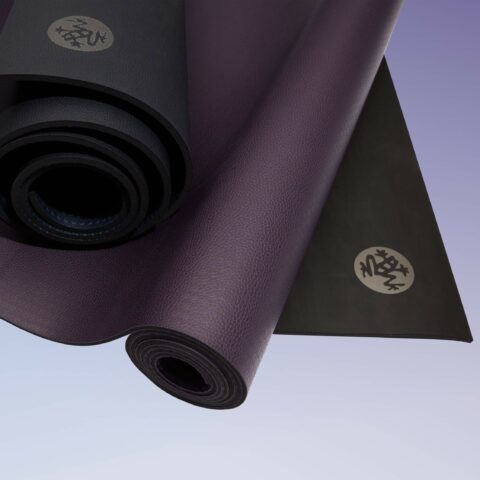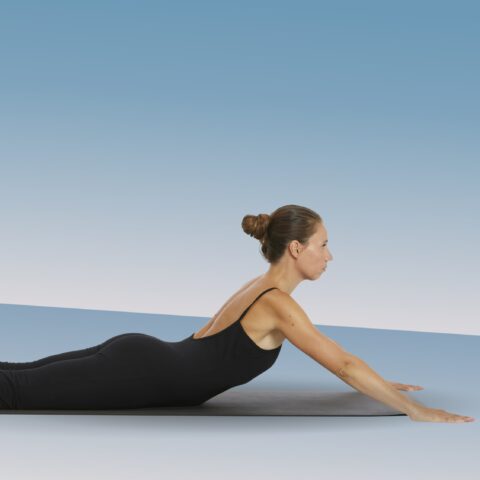We know that life can get busy, and finding time to get to a studio can sometimes be a challenge. That’s why we’ve put together this comprehensive guide to help you bring the Pilates studio experience right to your living room.
Whether you’re a seasoned practitioner or just starting your Pilates journey, this guide will provide you with the necessary tools and techniques to enhance your practice and fit it into your daily routine.
How to do Pilates at home?
Understanding Pilates: a home-based approach
Pilates is a unique, low-impact workout that focuses on strengthening the core muscles, improving flexibility, and enhancing body awareness.
The beauty of a home practice is that it’s incredibly flexible. You can practice when you want and it takes very little equipment to get started, so it’s likely that your first introduction to practicing Pilates at home will be with a mat and a few common Pilates exercises.
As you dive into each Pilates exercise, you’ll notice that Pilates focuses on core exercises, focused breathing, and moving while keeping the pelvis stable. This workout is all about control and precision.
It’s important to have a solid understanding of the workouts and the principles that guide them as you shape your own Pilates routine.
The history of Pilates
Joseph Pilates, the creator “Contrology,” which is now know simply as Pilates, believed that physical and mental health are intertwined, and his exercise method reflects that philosophy.
Pilates principles
There are six fundamental principles that form the foundation of Pilates workouts:
- Concentration: Focusing your mind on each movement.
- Control: Executing exercises with controlled movements.
- Centering: Emphasizing the core muscles as the powerhouse of the body.
- Precision: Performing each movement with accuracy and alignment.
- Breath: Utilizing proper breathing techniques to enhance movement efficacy.
- Flow: Transitioning smoothly from one exercise to another, promoting fluidity.
Types of Pilates workouts
There are different types of Pilates workouts that cater to various needs and fitness levels. Some common variations include:
- Mat Pilates: A series of exercises performed on a non-slip mat, using only body weight for resistance in a full-body workout.
- Reformer Pilates: Utilizing a specialized equipment called a Reformer machine, which provides added resistance and support to Pilates movements.
- Pilates with Props: Incorporating equipment such as resistance bands, stability balls, and Pilates rings to enhance the workout and develop muscular strength.
Benefits of Pilates exercises
Pilates offers a plethora of benefits for both the body and mind, including:
- Develop core strength and stability.
- Increase flexibility and strength in muscles throughout the entire body.
- Improve posture and alignment.
- Reduce back pain, injury prevention, and improved spinal health.
- Enhance body awareness and mind-body connection.
- Stress reduction and improve mental well-being.
By familiarizing yourself with the history, principles, types of workouts, and benefits of Pilates, you will gain a solid understanding of what you might be looking to achieve with your home practice.
Creating your home Pilates space
Creating a dedicated space for you to practice Pilates at home can be a fun and exciting way to elevate your Pilates workout. This way you get all the convenience of a Pilates class at home without sacrificing the studio experience.
Selecting the right area
Choose a room or flat surface in your home that is spacious enough to accommodate your Pilates mat or equipment. Also, consider a space where you can have privacy and minimal distractions to practice Pilates.
Pilates equipment
Depending on whether you’re focusing on Mat Pilates or Reformer Pilates, you’ll need little more than just a mat or at home reformer machine to get started.
However, you can always add a few pieces of small props to take your Pilates session, and space, to the next level. Some common equipment options include a Pilates ring, Pilates ball, resistance band, or bangle weights to attach to arms and legs.
Ensure that you have enough space to accommodate the equipment and store it properly when not in use to keep a serene space.
Mirror
Consider placing a mirror in your Pilates space to allow for self-correction and proper form alignment. A mirror can be particularly helpful in ensuring that you are performing the individual exercises correctly and safely.
Music and ambiance
Enhance your Pilates experience by creating a pleasant ambiance. Play soothing music or use essential oils or candles to create a calming atmosphere that helps you focus and relax during your workout.
Remember, creating a designated Pilates space in your home will not only set the right atmosphere for your practice but also serve as a constant reminder to prioritize your health and well-being.
Starting your Pilates routine at home
Once you set up your practice space, it’s time to kickstart your routine. Starting a consistent practice at home requires planning, discipline, and a clear understanding of the exercises you’ll be performing. Here are some essential steps to help you get started:
Establish your goals
Determine what you aim to achieve through your Pilates practices. Whether it’s improving core strength, increasing flexibility, or enhancing overall fitness, setting clear goals will help you stay motivated and track your progress.
Find a platform
Find a trustworthy platform with a certified Pilates instructor who can guide you through Pilates exercises and make you excited to practice Pilates at home.
Start with beginner-friendly exercises
If you’re new to practicing Pilates, start with beginner Pilates exercises and videos before progressing to more advanced ones. Focus on mastering the foundational movements and principles developed by Joseph Pilates, such as pelvic curls, abdominal curls, one-leg circles, or the swan dive.
Set a schedule
Establish a regular schedule for your Pilates workout. Consistency is key to progress.
Aim for at least 2-3 sessions per week, gradually increasing the duration and intensity as you become more comfortable. However, even one workout a week practiced consistently is still a pathway to a solid at home Pilates practice.
Remember to listen to your body, respect its limitations within each exercise, and gradually challenge yourself. With a well-designed workout plan and a commitment to regular practice, you’ll be well on your way to achieving your Pilates goals.
The role of online Pilates classes
Online platforms have become increasingly popular, providing a convenient and accessible way to enhance your at home Pilates practice. Whether you’re a beginner or an experienced practitioner, online classes offer a range of benefits and resources to support your journey.
Flexibility and convenience
Practice at your own convenience, eliminating the need to commute to a studio. You can choose classes that fit your availability and easily adjust your practice time to suit your daily routine.
Variety of classes
Exercise with a wide variety of Pilates classes, catering to different levels, styles, and goals. From beginner-friendly sessions to advanced workouts, you can explore different instructors, styles, and class durations to find what suits you best. This variety keeps your regular exercise engaging and helps you progress at your own pace.
Expert guidance
Certified Pilates instructors provide expert guidance and instruction with cues, modifications, and corrections to ensure you maintain proper form and alignment during the exercises. This guidance is crucial for maximizing the effectiveness of your workout and minimizing the risk of injuries.
Access to specialized classes
Online platforms often offer specialized Pilates classes targeting specific areas, such as arms and legs workout, lower body workout, posture improvement, prenatal and postnatal Pilates, rehabilitation, or specific equipment-based workouts. These specialized classes allow you to focus on your specific needs and goals, tailoring your practice accordingly.
Community and support
Find sense of community and support through virtual forums, chat groups, or social media platforms. Engaging with fellow practitioners and instructors can help you stay motivated, share experiences, and seek advice or inspiration.
Cost-effective
Virtual classes can be a cost-effective option compared to studio classes. Many platforms offer affordable subscription plans or pay-per-class options, allowing you to access a wide range of classes without breaking the bank.
Accessibility
Online Pilates classes provide accessibility to individuals who may have physical limitations, live in remote areas, or have limited access to local Pilates studios. Regardless of your location, you can access quality instruction and join a global community of Pilates enthusiasts.
It’s important to choose reputable platforms or instructors to ensure the quality and safety of the classes.
Good resources for at-home Pilates
We created BAY STUDIOS+ as a resource for those interested in developing an at home Pilates practice, those looking to make their exercise routine a little more convenient, or those looking for inclusive access to a quality exercise experience.
We truly believe that Pilates is for every body, so there are classes to learn the fundamentals if you’re diving into your first sessions and there are classes that will be an exciting challenge for even the most advanced practitioners.
Whether it’s your first or 100th class, we break down the movements for the whole body, so you can move and learn with confidence.
Maintaining consistency and motivation
Without the structure and accountability of a studio environment, it’s important to establish strategies that will keep you committed and motivated. Here are some tips to help you maintain consistency and motivation in your at home Pilates journey:
Create a schedule
Establish a regular schedule for your Pilates workout. Treat your practice sessions as non-negotiable appointments with yourself. Whether it’s early morning or evening, find a time to get the body moving that works best for you and stick to it consistently.
Find an accountability partner
Share your Pilates journey with a friend, family member, or fellow Pilates enthusiast. Having an accountability partner can provide support, encouragement, and help you stay on track. You can even schedule virtual Pilates sessions together for added motivation.
Mix up your routine
To keep your practice engaging and prevent boredom, vary your routine. Explore different full body exercises, try new variations, or incorporate props and equipment. This variety will challenge your body and mind, making your practice more enjoyable.
By implementing these strategies, you can maintain consistency and motivation in your home Pilates practice. Remember, it’s the dedication and commitment to your practice that will bring about lasting results.
Conclusion: Taking the next steps in your home Pilates journey
Congratulations on completing this comprehensive guide to doing Pilates at home! Now, it’s time to take the next steps in your home Pilates journey. Here are some actionable steps to help you continue and thrive in your practice:
Commit to your practice: Recognize the value of consistency and make a commitment to your Pilates practice. Set realistic goals, create a schedule, and hold yourself accountable for maintaining regularity.
Embrace variety: Keep your practice fresh and engaging by incorporating a variety of exercises, equipment, and class formats. Explore different Pilates styles, try new routines, and challenge yourself with both familiar and unfamiliar movements.
Utilize online resources: Take advantage of the wealth of online Pilates resources available. Join reputable online platforms, enroll in virtual classes, and connect with fellow Pilates enthusiasts to enhance your learning and growth.
Listen to your body: Pay attention to your body’s needs and limitations. Modify exercises when necessary, take rest days when needed, stretch sore muscles, and always prioritize safety and proper form.
Remember, your home Pilates journey is an ongoing process of growth and self-discovery. Embrace the journey, be patient with yourself, and enjoy the transformative effects that Pilates can have on your life.
So, roll out your mat, find your center, and embark on this incredible path of self-improvement through Pilates in the comfort of your own home. You’ve got this!







